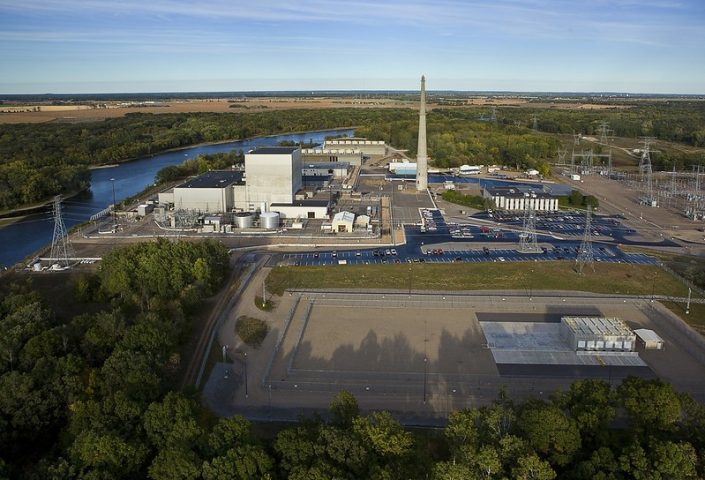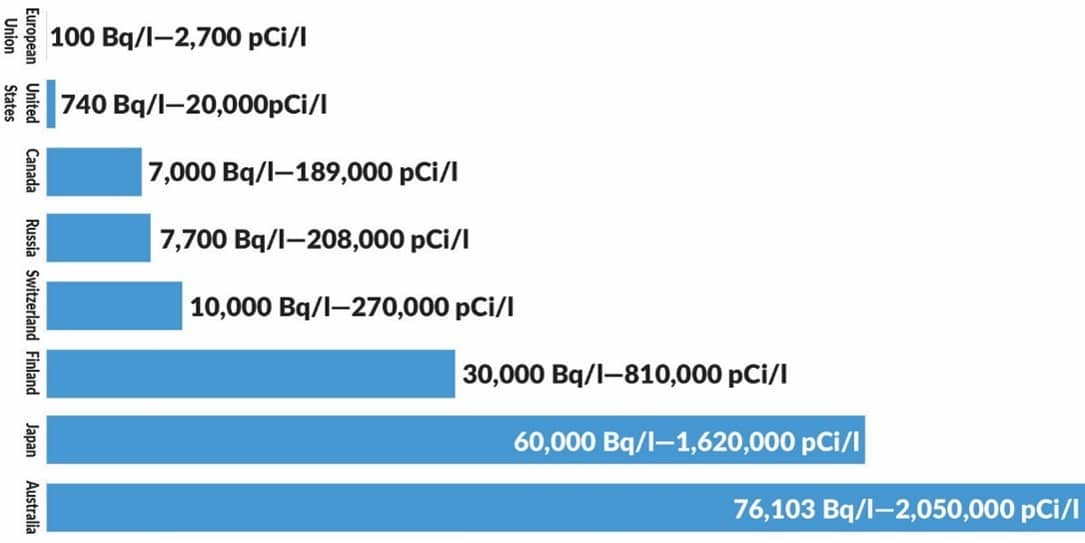
It happened four months ago, and authorities agree there was never any danger to the public.
In November, 400,000 gallons of radioactive water leaked from Xcel Energy’s Monticello Nuclear Generating Plant in Minnesota. The water contained tritium, a radioactive isotope of hydrogen, and once the company discovered the leak, Xcel reported the problem immediately to regulators.
“State officials said they waited to get more information before going public with it,” explains the Associated Press. The article quotes a spokesman from the Minnesota Pollution Control Agency (MPCA), Michael Rafferty, who said that the leaked water — including any groundwater contamination — “remains contained on Xcel’s property and poses no immediate public health risk.”
Tritiated water leaked from a pipe between two buildings on November 21. The company said the contaminated water contains tritium levels below federal safety thresholds. Off-site monitoring confirms no contamination beyond the nuclear plant boundaries, nor has contamination “been detected beyond the facility or in any local drinking water,” according to an Xcel Energy statement. Lack of any threat is the reason given for their four-month delay in reporting the information to the public.
Teapot Tempest
Why, then, has the story made thousands of headlines over the past week? Are the company, agencies, and media outlets being dishonest, and did humanity just dodge a huge nuclear threat?
That’s the implication, of course, which feeds the public’s radiophobia that has been carefully nurtured and consistently fed in similar fashion since the early 20th century. The hype is merely to “advance an anti-nuclear agenda” of an establishment that wants to prevent access to clean, affordable, reliable energy, according to retired nuclear engineer Jeffrey Mahn.
“Tritium is nothing more than a ‘political’ problem, generating lots of sound and fury from the media. Otherwise, it poses no threat to humans or the environment,” he explains in The Tritium Tempest in a Teapot.
Case in point: Though regulators and media admit the tritiated water is not dangerous, they still use innuendo-laden verbiage to refer to the “contamination” and assure us that drinking water is unaffected. These are misleading misnomers.
Tritium is a radioactive isotope of hydrogen and is, according to the U.S. EPA website, most commonly found in water. It is a very weak beta emitter. (Beta particles, a form of radiation far less potent than gamma and x-rays, are easily stopped by solid matter.) Medical manufacturers use tritium to test the safety of potential new drugs. Without this radioactive element, we would have no self-luminous wrist watch dials, exit signs, aircraft gauges, or paints.
Sensational vs. Sane
But bureaucrats prefer the sensational to the sane. Interestingly, whether drinking water is adversely affected depends upon which of them you ask. Vastly differing guideline reference levels exist for tritium in so-called safe drinking water across the globe. Chances are you’ll find limits expressed in becquerels per liter (Bq/L), a becquerel being equivalent to one radioactive decay per second, but the quantities are drastically different.
Look at the examples below. The World Health Organization says that in order for drinking water to be safe, the concentration of tritium must be below 10,000 Bq/L, while the U.S. Environmental Protection Agency (EPA) dictates that limit should be 740 Bq/L. Meanwhile, Canada’s guidelines set the limit of tritium in drinking water at 7,000 Bq/L. The European Union requires that, at 100 Bq/L, water must be screened for all radionuclides. By that metric, Finland, Japan, and Australia are off the charts, as illustrated here:

In other words, much of the ink spent on tritium is hype. “The trouble with tritium is there is no trouble with tritium,” quips James Conca in last October’s Nuclear News. “No adverse effects on the environment or humans have ever been seen” from naturally occurring tritium, even at levels far higher than those at accident sites. Incidentally, Conca was writing about Japan’s planned discharge of Fukushima tritiated water to the Pacific Ocean this year.
Fukushima
There has been a lot of negative publicity about that imminent release, though Japanese authorities report the water will be diluted to 1,500 Bq/L — orders of magnitude below the country’s established threshold level. It’s also much lower than that to which people in some areas are exposed from natural radiation, according to radioactive pollutant expert Jim Smith of Science Alert.
“As radioactive elements go, tritium is relatively benign and its existence as tritiated water reduces its environmental impact,” Smith writes. “Chemically identical to normal water, tritiated water passes through organisms like water does and so does not strongly accumulate in the bodies of living things.”
He warns that “Fukushima’s beleaguered fishing industry” is likely to be the real casualty — not because of “contaminated” water — but because of “the political and media furor that’s likely to surround new releases of radioactive water to the Pacific Ocean.”
David Roelant, interim radiation safety officer and researcher at Florida International University, makes a similar complaint. “As a university researcher with expertise in radiation protection and safety, I often see information and opinions that use language to create a sense of fear in the public,” he writes.
That pervasive fear is allowing federal regulators to keep nuclear power shackled for years to come. “The release of radioactivity from coal piles and from medical facilities greatly exceeds that from nuclear power facilities, and these industries are all regulated differently,” Roelant points out.
Until the public understands real radiation risks, news like Minnesota’s non-emergency at the Monticello nuclear plant will continue to stoke fears and stifle safe, clean, abundant, and affordable nuclear.




